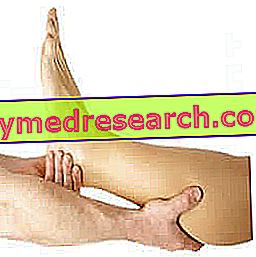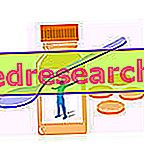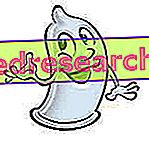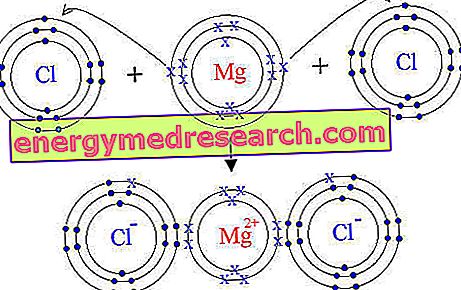Main characters
In medical literature, restless legs syndrome (RLS) is described as an unpleasant sensation of constant tingling of the lower limbs, mostly occurring at night. We are not talking about a simple temporary disorder: restless legs syndrome is a real chronic pathological discomfort, of a neurological nature, which torments the sleep of those affected.

Restless legs syndrome can sometimes be confused with other disorders, sharing similar symptoms: to avoid confusing diseases, the differential diagnosis is very important.
Many anemic patients with restless legs syndrome find relief from dietary iron supplementation; pregnant women predisposed to this syndrome should take more generous doses of vitamin B12 and folic acid (indispensable for preventing spina bifida and reducing the risk of RLS occurrence).
In the course of the article, we will also focus on other possible useful treatments to alleviate the symptoms of restless legs syndrome.
Diagnosis
There is no specific diagnostic test to detect absolute restless leg syndrome with absolute certainty. However, the National Institutes of Health has compiled a list of observable diagnostic criteria, common to all patients suffering from restless legs syndrome:
- Extreme need to move the lower limbs, to find relief from paresthesias and tingling in the legs
- Improvement of symptoms with leg movement (rubbing, stiffening, distension, lifting etc.)
- Worsening of symptoms with rest, especially during sleep
- The symptoms improve and worsen following circadian rhythms: the discomfort becomes acute during the night and begins to fade at dawn
In addition to observing these important criteria, the doctor may suspect restless legs syndrome by listening and carefully evaluating the symptoms reported by the patient. Often, the victim is not able to describe in detail the perceived pain; it is not uncommon for annoying perception to be described with the terms "creeping pain", "pins and needles", "leg stretches", "limb itching", "cramp-like pains".
Sometimes, the doctor can prescribe blood tests to the patient, to discard other possible and suspected concomitant pathologies. Only rarely is a sleep test required.
Differential diagnosis
The differential diagnosis of restless legs syndrome must be made with:
- Akathisia: it is a particular psychomotor syndrome characterized by the inability to stand still, associated with anxiety, agitation, paresthesia and restlessness. Unlike restless legs syndrome, akathisia is neither associated with circadian rhythms nor can it improve with movement.
- Leg cramps: these are involuntary muscular contractions of the lower limbs, extremely painful and palpable, almost always unilateral. Leg cramps, similarly to symptoms of restless legs syndrome, are also often governed by circadian rhythms; however, the cramps are characterized by a palpable stiffening of the muscle, which does not occur in the RLS syndrome.
- Pain in the legs and feet after a stressful job
- Neuropathies: the symptoms that characterize this disorder can be easily confused with those of the RLS syndrome. However, in the context of neuropathy, leg movements are generally not associated with motor restlessness, and symptoms do not improve with motion.
- Deep venous thrombosis and intermittent claudication : patients suffering from these pathologies tend to present cold and swollen extremities, elements not appreciable in restless legs syndrome. Furthermore, the symptoms of vascular diseases do not follow circadian rhythms and do not improve with movement; intermittent caludication, on the other hand, is accentuated with movement.
Care
To learn more: Restless Legs Syndrome Remedies
There is no complete therapy for restless legs syndrome. However, the search for the triggering cause is essential to guide the doctor towards choosing the most appropriate drugs to alleviate the symptoms. Adequate and specific therapy can correct the patient's clinical profile, improving quality of life as much as possible.
The treatment of the triggering pathological condition relieves the symptoms of restless legs syndrome: from what has been said, it is understandable how the diagnostic assessment is indispensable for the purposes of therapy.
When it is not possible to identify a precise cause, the treatment focuses on the modification of the lifestyle of the patient and, if necessary, on the administration of drugs. Stretching exercises, specific massages and hot baths are particularly useful for therapy purposes.
We recall that the administration of some pharmacological specialties, such as antidepressants and antiemetics, can exacerbate the symptoms associated with restless legs syndrome.
What are the most used drugs for restless legs syndrome?
To learn more: Drugs for Restless Legs Syndrome
- Restless leg syndrome dependent on iron deficiency should be treated by a martial therapy, to be continued as long as the concentration of ferritin in the blood exceeds 20-50 mcg / L.
- Compared to healthy ones, pregnant women with restless legs syndrome should take more generous supplements of vitamin B9 (folic acid) and B12. Let us briefly recall that pregnant women should always supplement their diet with folic acid supplementation, which is essential to protect the unborn child from spina bifida. Pregnant women should take higher amounts of vitamin B9 if they have a predisposition to restless leg syndrome.
- When restless legs syndrome weighs heavily on sleep quality, multiple medications can be used:
- tranquilizer drugs (eg clonazepam)
- antiparkinson drugs: ropinirole and pramipexole (approved by the FDA for the treatment of restless legs syndrome). The combination of levodopa + carbidopa (Sinemet) is also particularly suitable for alleviating leg movements in the context of RLS.
- Antiepileptic drugs: ex. gabapentin
- antiparkinson drugs: benzodiazepines. The administration of these active ingredients is not useful to reduce pain in the legs, but rather to promote sleep for the patient suffering from the RLS syndrome.
- Opioid drugs: codeine, oxycodone (considered second-choice drugs for the treatment of restless legs syndrome).
Before taking any active ingredient, medical consultation is recommended. An immoderate use of drugs can exacerbate the symptoms of restless legs syndrome.



